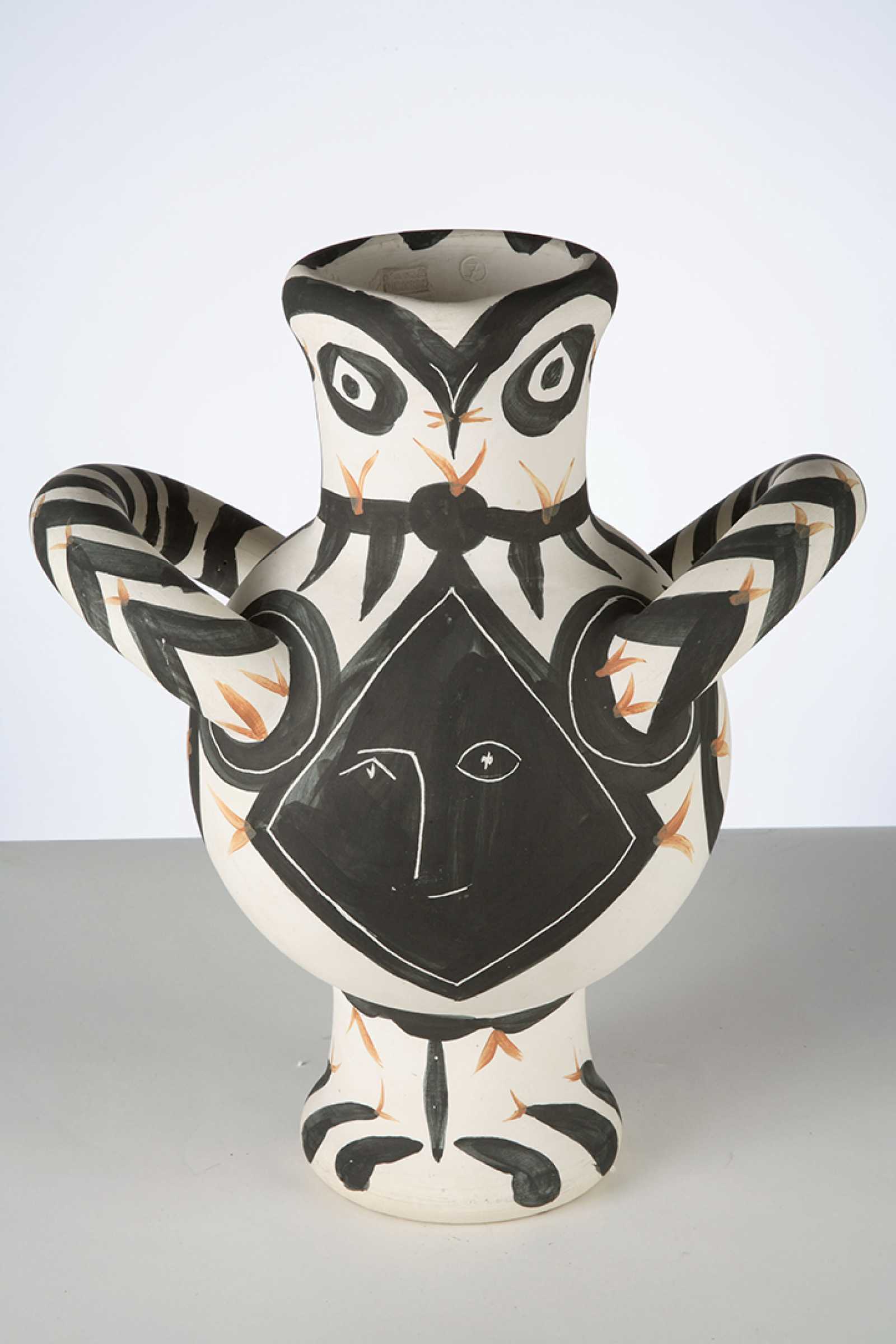Artwork of the Week
Pablo Picasso
Owl is one of Pablo Picasso’s largest and most important ceramic sculptures. Although Picasso’s work in ceramics was considered tangential to his paintings and sculptures, it is a genre that is receiving greater appreciation for its unique character. Residing in the south of France from the mid-1940s until his death in 1973, Picasso took great interest in the ceramic artisan traditions in the region and devoted himself to working with the local potters. He embraced the commercial nature of pottery production as a means of circulating his own artistic creations to broader audiences.
Owls intrigued Picasso and appear in different guises in his paintings, drawings, and sculpture; he even kept an owl for a while in his Paris studio. In this ceramic with black-and-white decoration, he transformed a tall, two-handled vase into a stout bird with outspread wings. The high neck of the vase became the owl’s head, with a black beak and two large round eyes, and the handles became its wings. On its chest Picasso painted and incised a human face, with a smile that accords with the overall lighthearted theme.
Pablo Picasso (Spanish, 1881-1973), Owl (Hibou or Gros Oiseau visage noir), 1951, glazed and incised earthenware, edition 7/25, 21 ¼ × 18 inches. Gift of Gwendolyn Weiner for the contribution of Board and staff toward the success of the 75th Anniversary Gala, 2014.74.
Michael C. McMillen
Los Angeles-based artist Michael C. McMillen builds assemblages made of scavenged materials and artificially aged scraps of wood to convey memories and images of the past. His large-scale architectural sculptures transform fundamental elements of buildings—windows, doors, ladders—into whimsical environments of implied narrative and endless possibilities.
Psycho Tower suggests an overgrown childhood playhouse. The artist describes the work as a metaphor for life: “Architectural metaphors are always in my work. I suppose I see stairs as a metaphor for life itself in that one hopes there’s some kind of ascension as one ages, and windows and doors signify the beyond and suggest a glimpse of another world. Hallways and corridors are about choice. You can’t know where the hallway you’ve chosen will take you until you get there, so they’re also about risk and mystery.”
Michael C. McMillen (American, born 1946), Psycho Tower (The 2nd Observatory), 1993, mixed media assemblage, 103 ¼ x 28 ½ x 29 ¾ inches. Museum purchase with funds provided by the Contemporary Art Council, 1996, 3-1996.


